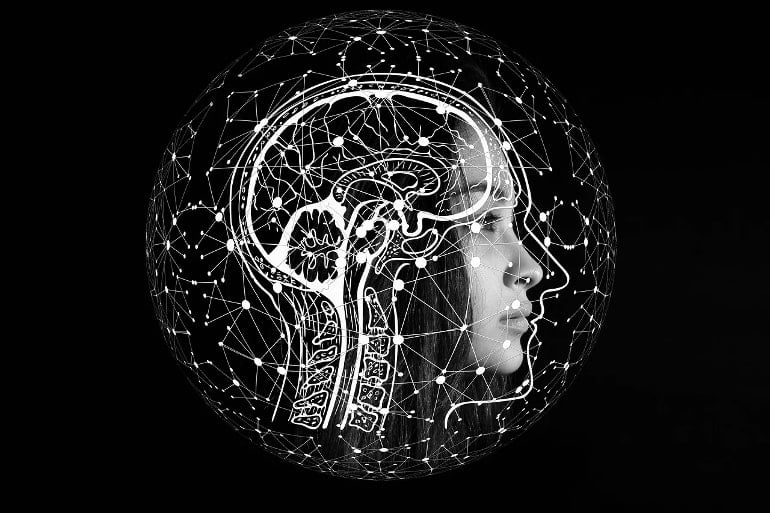Summary: Roughly, 3 to 8% of women suffer from premenstrual dysphoric disorder (PMDD), a disorder that causes anxiety, depression, and mood swings during the menstruation cycle. PMDD appears to increase serotonin transporter density from the preovulation phase to the premenstrual cycle phase. The findings could aid in the development of new treatments for PMDD.
Source: Elsevier
A new study in Biological Psychiatry explores the interplay between the serotonin system and estradiol in the brain, showing that the central nervous system in patients with premenstrual dysphoric disorder (PMDD) seems to increase serotonin transporter density from the periovulatory phase (when estradiol levels are high) to premenstrual cycle phase (when both estradiol and progesterone are decreasing).
The findings have the potential to advance the clinical treatment of PMDD.
Premenstrual syndrome (PMS), which can include physical symptoms as well as depression and anxiety, affects about half of menstruating individuals a few days before the onset of menstruation.
About 3 to 8% of people who menstruate experience PMDD, a far less recognized diagnosis. PMDD is also associated with mood swings, depression, and anxiety, but its symptoms are more severe and can last for up to two weeks at a time. The lifetime toll of PMDD is comparable to that for people with major depressive disorder.
Previous studies that compared fluctuations in ovarian hormones between women with PMDD and healthy women interestingly found no substantial differences, suggesting that dysregulated hormones in the periphery are not the underlying cause of the disorder.
An alternative idea is that the brain’s response to normal endogenous hormonal changes differs in patients with PMDD, although how that happens remains unclear.
Treatment of PMDD with selective serotonin reuptake inhibitors, or SSRIs, results in remarkably rapid alleviation of symptoms – on the order of hours or days, rather than weeks as in treatment for depression.
In the current study, led by Julia Sacher, MD, PhD, from the Max Planck Institute for Human Cognitive and Brain Sciences, Leipzig, Germany, examined 30 patients with PMDD and 29 unaffected control women over the course of two menstrual cycles. The researchers used positron emission tomography (PET) imaging to visualize availability of the serotonin transporter protein in the brain throughout the cycle, reflecting short-term changes in its expression.
“We found a significant increase of serotonin transporter from periovulatory to premenstrual phase in patients with PMDD – an 18% change in the midbrain, a brain region with the richest serotonin transporter expression. This increase was associated with the severity of depressed mood premenstrually,” said Dr. Sacher.

Unexpectedly, Dr. Sacher and colleagues also found a decrease in midbrain serotonin transporter density in healthy women, which could point to a protective mechanism of the healthy female brain in the midst of a changing hormonal environment.
“Typically, it is assumed that serotonin transporter density is an individual trait, with only an approximately 10% change over a decade as the human brain ages, rather than a state that changes within shorter periods of time. However, studies in patients with seasonal affective disorder (SAD) show seasonal changes of serotonin transporter,” Dr. Sacher explained.
“Although the reports of serotonin transporter availability in depression have been mixed, this may be due to the heterogeneity of that disease. In more homogenous types of affective disorders, such PMDD or SAD, relatively rapid dynamics of serotonin transporter availability seem to play an important role.”
John Krystal, MD, editor of Biological Psychiatry, said of the work, “This technically demanding study identifies a new potential mechanism contributing to negative premenstrual mood states in some women. It also supports the use of SSRIs to treat premenstrual dysphoric mood.”
The findings provide evidence that individuals with PMDD experience short-term changes in serotonin transporter density throughout the menstrual cycle, which suggests that patients might benefit from taking SSRIs at specific times during the cycle to best target these changes.
About this serotonin and PMDD research news
Author: Rhiannon Bugno
Source: Elsevier
Contact: Rhiannon Bugno – Elsevier
Image: The image is in the public domain
Original Research: Closed access.
“Increase in serotonin transporter binding in patients with premenstrual dysphoric disorder across the menstrual cycle: a case-control longitudinal neuroreceptor ligand PET imaging study” by Julia Sacher et al. Biological Psychiatry
Abstract
Increase in serotonin transporter binding in patients with premenstrual dysphoric disorder across the menstrual cycle: a case-control longitudinal neuroreceptor ligand PET imaging study
Background
Premenstrual dysphoric disorder (PMDD) disrupts the lives of millions of people each month. The timing of symptoms suggests that hormonal fluctuations play a role in the pathogenesis. Here, we test whether a heightened sensitivity of the serotonin system to menstrual cycle phase underlies PMDD, assessing the relationship of serotonin transporter (5-HTT) changes with symptom severity across the menstrual cycle.
Methods
In this longitudinal case-control study, we acquired 118 [11C]DASB positron emission tomography scans, measuring 5-HTT non-displaceable binding potential (BPND) in 30 patients with PMDD and 29 controls during two menstrual cycle phases (periovulatory, premenstrually). The primary outcome was midbrain and prefrontal cortex 5-HTT BPND. We tested whether BPND changes correlated with depressed mood.
Results
Linear mixed-effects modeling (significant group*time*region interaction) showed a mean increase of 18 percent in midbrain 5-HTT BPND (mean±SD, periovulatory=1.64±0.40 premenstrual =1.93 ±0.40, delta = 0.29 ±0.47, t = -3.43, p=0.0002) in PMDD, whereas controls displayed a mean 10 percent decrease in midbrain 5-HTT BPND (periovulatory = 1.65 ±0.24 > premenstrual = 1.49 ±0.41, delta = -0.17 ±0.33, t = -2.73, p=0.01). In patients, increased midbrain 5-HTT BPND correlated with depressive symptom severity (R2 = 0.41, p<0.0015) across the menstrual cycle.
Conclusions
These data suggest cycle-specific dynamics with increased central serotonergic uptake followed by extracellular serotonin loss underlying the premenstrual onset of depressed mood in patients. These neurochemical findings argue for systematic testing of presymptom onset-dosing of selective serotonin reuptake inhibitors or non-pharmacological strategies to augment extracellular serotonin in PMDD.






